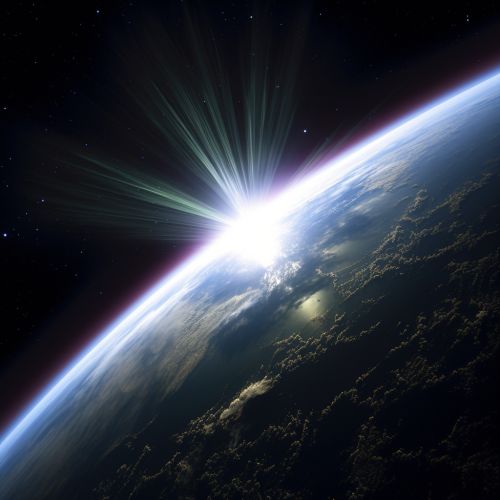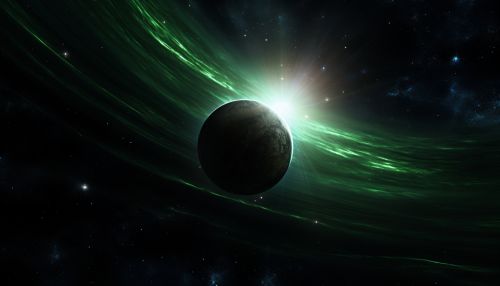Magnetosphere
Overview
The Magnetosphere is a region of space surrounding an astronomical object in which charged particles are manipulated or affected by that object's magnetic field. It is created by a star or planet with an active interior dynamo. In the case of Earth, the magnetosphere is shaped by the solar wind, the stream of charged particles emanating from the Sun.
Formation and Structure
The formation of a magnetosphere is a result of the interaction between the solar wind and the planet's magnetic field. The solar wind, a stream of charged particles flowing outwards from the Sun, carries with it the Sun's magnetic field. When this solar wind reaches a planet with a magnetic field, it interacts with the planet's field and forms the magnetosphere.
The structure of the magnetosphere is complex and dynamic, changing in response to solar activity and the orientation of the planet's magnetic field. The main components of the magnetosphere include the bow shock, magnetosheath, magnetopause, magnetotail, and the inner magnetosphere.
Bow Shock
The Bow Shock is the region where the speed of the solar wind abruptly drops as a result of its collision with the magnetosphere. This is the outermost boundary of the magnetosphere.
Magnetosheath
The Magnetosheath is the region of the magnetosphere between the bow shock and the magnetopause. It contains a turbulent mixture of solar wind particles and magnetic field.
Magnetopause
The Magnetopause is the boundary of the magnetosphere that separates the magnetosheath from the inner magnetosphere. It is where the pressure of the solar wind and the planet's magnetic field are in balance.
Magnetotail
The Magnetotail is the elongated extension of the magnetosphere on the side away from the Sun. It is shaped by the pressure of the solar wind.
Inner Magnetosphere
The Inner Magnetosphere is the region closest to the planet, containing the planet's radiation belts and the plasmasphere.
Earth's Magnetosphere
Earth's magnetosphere is a vast, comet-shaped bubble, which has played a crucial role in our planet's habitability. It protects the Earth from the full impact of the solar wind, deflecting most of it around the planet. This protects the atmosphere from erosion and shields life on Earth from harmful solar radiation.


Magnetospheres of Other Planets
Other planets in our solar system also have magnetospheres. The gas giants Jupiter and Saturn have particularly strong magnetospheres due to their size and rapid rotation. Mars and Venus, on the other hand, lack global magnetic fields and thus do not have magnetospheres like Earth's. Instead, they have induced magnetospheres, created by the interaction of the solar wind with their upper atmospheres.
Importance of Studying Magnetospheres
Studying magnetospheres is important for understanding the habitability of planets, both within our solar system and beyond. They play a crucial role in protecting a planet's atmosphere and surface from solar radiation, which is key for the development and survival of life. Furthermore, understanding the dynamics of magnetospheres can provide insights into solar-terrestrial interactions and space weather, which can affect satellite operations and communications on Earth.
